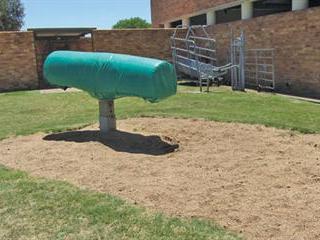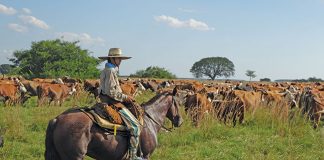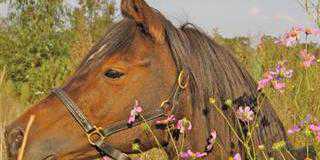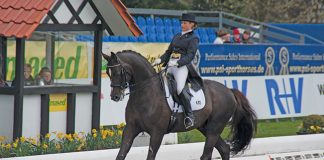
Live coverings are potentially the most dangerous activities related to horse breeding. Pasture breeding, especially with a novice stallion, which is often brought up alone or with other colts in a paddock from the time it is weaned until it is old enough to serve, is particularly hazardous.
A mare will only stand for a stallion when it is fully on heat. Judging this by teasing the mare, with a strong gate between the mare and teaser stallion, is a fine art. The mare may look as if its ready to receive a stallion, but as soon as there’s no gate between them, she might lash out with one or both hind legs to protect herself as the stallion approaches.
Hand service is more commonly used with valuable breeding stallions. In this instance, the mare is held by one or two helpers and the stallion led up to her and controlled during mating by another handler.Many breeders hobble the mare on such an occasion, but this presents another hazard.
The mare can lose her balance as the stallion mounts her, and the mare, the stallion and the handlers can become tangled in the ropes, often with disastrous consequences. A stallion can also bite the mare on the neck or withers during mating.
Phantom
It’s no wonder, then, that many stud breeders with valuable stallions use artificial insemination (AI), where the stallion jumps a ‘phantom’ and the semen is collected in an artificial vagina. A ‘phantom’ or ‘dummy’ is a large, padded object about the size and shape of a mare’s body. It is positioned, usually at a slight angle, at approximately the same height as a mare in season. Because of the chance of transmitting diseases such as contagious equine metritis (CEM), it’s usually covered in plastic so that it can be easily disinfected.
In many cases, vets also place cling wrap over it, so that the covering can be disposed of and replaced between stallions.
A stallion needs to be trained to jump a phantom and cannot have semen collected unless it has an erection. There are several ways this can be achieved, the main one being the use of a mare in season which stands on one side of the phantom, while the stallion is brought at an angle up to the other side.
As the stallion rears, the mare is moved forward slightly and the handler directs the stallion towards the phantom. Once on the dummy, the artificial vagina is placed over the stallion’s erect penis and it will usually ejaculate. That’s the theory. In reality, the process is often a great deal more difficult, particularly if the stallion is bad tempered or over-enthusiastic. But once the stallion has been ‘trained’, the mare need no longer be present in many cases and, over time, the procedure can become easier.
Hot transfer
Most breeders use ‘hot semen transfer’. The semen is collected in an artificial vagina, a drop is examined under a microscope for motility and semen extender is added. The mixture is then injected into the cervix of the mare in season. It’s important that the correct temperature is maintained and the procedure should be done by an AI practitioner or a vet.
Frozen semen
A more complex process is to collect and cyropreserve semen so that it can be shipped over a distance. The quality of frozen semen must be certified and the stallion donating the semen has to be tested annually for equine viral arteritis, dourine and CEM. Batches of chilled and frozen semen vary in quality, and freezing semen can drastically decrease its viability. In some cases, semen from stallions that are very fertile can’t be frozen successfully.
There are legal aspects attached to AI in all animals, including horses, and these are set out in the Animal Improvement Act. Breeders must consult their breed society in this regard as a stallion used as a semen donor must be registered with the department of agriculture.
Contact Dr Mac at [email protected]. Please state ‘Horse talk’ in the subject line of your email.













